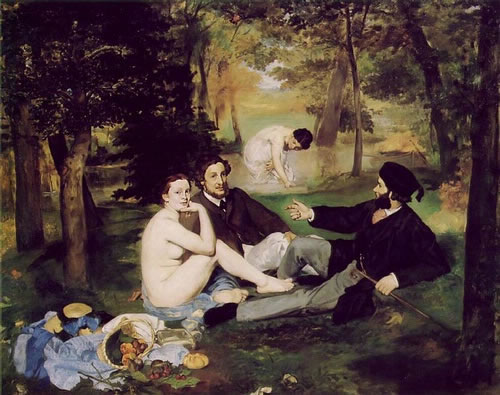Why should there be a museum to exhibit art that some people find offensive, disturbing, shocking, insulting, vile, distasteful, pornographic, blasphemous or ugly? Before answering that question, we should note that such a museum already exists – the Virtual Museum of Offensive Art – with free access for all (that is to say, if the internet has not been censored).
 It is a personal choice to decide to enter the Virtual Museum of Offensive Art and run the risk of being insulted, offended or shocked. The museum consists of a collection of thumbnails showing artworks from different times and places, but primarily contemporary western art. If you select an artwork, the piece is enlarged and there appears – albeit in Dutch – a short description of the work and an explanation of what happened: why is or was this work of art offensive and to whom?
It is a personal choice to decide to enter the Virtual Museum of Offensive Art and run the risk of being insulted, offended or shocked. The museum consists of a collection of thumbnails showing artworks from different times and places, but primarily contemporary western art. If you select an artwork, the piece is enlarged and there appears – albeit in Dutch – a short description of the work and an explanation of what happened: why is or was this work of art offensive and to whom?
As you browse the collection, which presently consists of 150 pieces, you ask yourself: why is this offensive? There seem to be easy ways to offend: religious satire is a successful strategy, especially when nudity is involved; pornography; homosexuality, when associated with bulwarks of homophobia like the army and the church. But it is now hard to see why in the 19th century works by Rodin and Manet, like Dejeuner sur L’Herbe were scandalous.
Throughout history, societies have reacted to scandals in art by calling for censorship and self-censorship. Most of the works on display here have been censored. But censorship is always temporary: Dejeuner sur L’Herbe can now be seen in all history of art textbooks. And the Danish cartoons, too, will enter the history books thanks to the demand for censorship by Muslims. Social conventions change.
The ethos of the museum is in keeping with liberal views on society: freedom should be as large as is logically consistent with the freedom of other individuals. Use of violence and incitement of violence are the clear boundaries of freedom. The right of freedom of expression logically entails the right to offend and insult. In an open society people have the freedom to create their own lives as much as possible without restriction by others. As such, it is possible that you can be offended or even insulted by the artistic creations of other people.
Taking a closer look at the collection of the Virtual Museum of Offensive Art, one notices that the subjects of the artworks mostly concern ideologies that are unfree – many works are a statement, a protest against the taboos and moral commands of religions and authoritarian ideologies. Seen from this perspective the majority of the exhibited artworks are an appeal or even a cry for freedom.
This is a Museum without censorship and thus all offensive art is welcome. The collection makes one reflect: what are the limits of tolerance? What is art? What is freedom? Why is this offensive? Why do people get angry about this? Why do people make this? It is a place for the artistic contemplation of freedom and the ideal of the open society. Kant’s adagio of the Enlightenment is Sapere Aude – Dare to Think. The adagio of the new Enlightenment could well be Videre Aude: Dare to Watch, and feel free to be offended.

